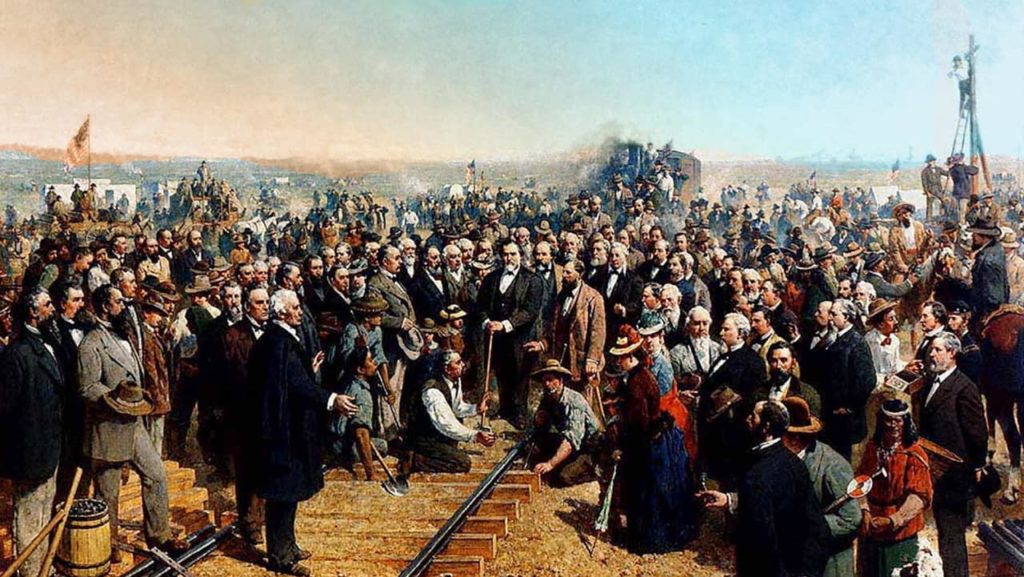“A good story is a problem. It makes your mind shut down, and you ignore everything else”.
ATF agent in Manhunt: Deadly Games
I have recently been reading ‘Billion Dollar Loser’ by Reeves Wiedem, about WeWork and its founder Adam Neumann. It reminded me of an NYT article from Amanda Hess last year titled “Fyre Festival, Theranos and our never-ending ‘scam season'” about the rise of grifting among Millenials. She pointed to Billy McFarland (Fyre Festival), Elizabeth Holmes (Theranos), and Anna Delvey (SoHo grifter) as examples of American Millenials who have become infamous in the last few years for overselling bad products/personalities and underperforming or outright lying people out of enormous amounts of money. Jia Tolentino wrote in 2018 that “At some point between the Great Recession, which began in 2008, and the terrible election of 2016, scamming seems to have become the dominant logic of American life.” She further expounded on this phenomenon as “Grifter season comes irregularly, but it often comes in America, which is built around mythologies of profit and reinvention and spectacular ascent. The shady, audacious figures at its center exist on a spectrum, from folk hero to disgrace. The season begins when the public catches on to a series of scammers of a particularly appealing sort—the kind who provoke both Schadenfreude and admiration.”
Adam Neumann, the co-founder of WeWork, is another addition to this list. Some on Twitter would argue that Elon Musk, and to a certain extent, Travis Kalanick, should be mentioned in the same breath as these grifters, but he is not a millennial and at least has something to show for all the hype. There are many similarities among this lot, including the worship of Steve Jobs (Neumann in passing, Holmes to the extreme), megalomania (Neumann telling a rabbi, “I am WeWork”), abusive behavior with employees (Neumann hired people for office jobs and forced them to do hard labor, Holmes was frequently threatening, McFarland did not pay local workers in Exuma), no or little experience in the industries they wanted to disrupt (Neumann had been a landlord for one floor of a building before starting WeWork, Holmes came with a background in chemical engineering undergrad training which she never finished, McFarland had never organized a musical festival before), middle class upbringing (Neumann’s parents were doctors, Holmes’s worked in the government, McFarland’s were real estate developers), using family and friends for early funding (Neumann through his wife Rebekah Paltrow and the connections he made at the Kabbalah center, Holmes through her family friends such as Tim Draper and Victor Palmieri), nepotism (Neumann employed his wife, sister and brother in law, Holmes installed her brother and his fraternity brothers at Theranos), and lots of charisma. There was even overlap between Neumann and Billy McFarland. McFarland had started his first company out of a WeWork office.
There were a lot of dissimilarities too. Neumann fudged numbers, but Holmes outright lied to people about her technology and what it could achieve, possibly harming cancer patients. Neumann had a major benefactor, Masayoshi Son, who invested billions in WeWork, an opportunity that Holmes did not get but more on Holmes later.
Neumann wanted to disrupt an industry that he did not understand well and which may or may not need to be “disrupted.” WeWork was a lousy landlord that provided small spaces for high prices with the promise of ‘community building’ in the form of common areas, beer on tap, and fancy coffee. Neumann tried to frame it as a tech company even though there was little to no technology involved in this operation. He wanted to ride the wave of success that tech companies were on. Unfortunately for him, he believed in his own bullshit. At its height, WeWork was opening up a new co-working location every day. By the summer of 2019, WeWork had 528 in 29 countries. The company had raised $12.8 billion but was losing $219,000 an hour.
The person who I find the most similar to Adam Neumann is, ironically, Donald Trump. They share many traits such as megalomania, exploiting their employees, hypocrisy (implementing vegetarianism at WeWork while having Lamb dinners), nepotism, fondness for opulence (Private jets, fancy cars), self-dealing (Neumann buying buildings and renting them to WeWork), showmanship, wanting absolute power, and expanding their brand outside their areas of expertise. The final days of Neumann at WeWork are reminiscent of the final days of the Trump presidency: everyone around Neumann knew that the jig was up, but they were too afraid to say anything. There is still litigation going on about his exit.
The tale of WeWork’s rise and fall is also the story of how venture capitalists (V.C.s) have taken over the startup world. In a NewYorker story titled “How Venture Capitalists are deforming capitalism“, Charles Duhigg wrote that ‘Whereas venture capitalists like Tom Perkins once prided themselves on installing good governance and closely monitoring companies, V.C.s today are more likely to encourage entrepreneurs’ undisciplined eccentricities.’ He writes at length about what happened at WeWork once the leash was off:
“WeWork had a number of internal problems that should have concerned Dunlevie and the other board members. In the spring of 2018, the board learned that a senior vice-president had prepared a lawsuit accusing a colleague of giving her a date-rape drug. She also alleged that executives often referred to female co-workers with such epithets as ‘bitch,’ ‘slut,’ and ‘whore.’ (The senior vice-president received a settlement, and the suit was not filed; Dunlevie told me that he has no recollection of the complaint.) There were reports, too, of top executives using cocaine at events, dating subordinates, and sending texts like ‘I think I should sleep with a WeWork employee.’ Some board members knew that Neumann used drugs, that he had once punched his personal trainer during a workout session in his office, and that a raucous party in Neumann’s office had ended with a glass wall shattered by a tequila bottle.
The board had also allowed Neumann, a passionate surfer, to take thirteen million dollars in WeWork funds and invest them in a company that made artificial-wave pools, even though surfing had nothing to do with WeWork’s business. Neumann spent millions more to finance an idea from Laird Hamilton, a professional surfer, to manufacture ‘performance mushrooms.’ The board knew that WeWork had spent sixty million dollars on a corporate jet, which Neumann and his family took to various surf spots. It had stood by as WeWork’s name was changed to the We Company; not long afterward, the company paid Neumann $5.9 million in stock because he had trademarked the word ‘We.’ (The payment was later returned.)”
For decades, venture capitalists have succeeded in defining themselves as judicious meritocrats who direct money to those who will use it best. But examples like WeWork make it harder to believe that V.C.s help balance greedy impulses with enlightened innovation. Rather, V.C.s seem to embody the cynical shape of modern capitalism, which too often rewards crafty middlemen and bombastic charlatans rather than hardworking employees and creative businesspeople.
———————————————————————————————–
“I tend to be wary of charismatic people. My father always reminded me that Ted Bundy was also very charismatic”. A former WeWork employee on the podcast WeCrushed.
There is an alphabet soup of regulators and regulations that governs laboratory medicine in the United States, including but not limited to FDA, CMS, CAP, AABB, Joint Commission, CLIA, and so on. Devices in a laboratory are regulated by the FDA. Any new device that one brings on or any new testing methodology that one wants to start requires permission from the FDA. Recently, many labs have applied for or received emergency use authorizations (EUA) from the FDA for their lab-developed tests (LDTs). Getting a full authorization for an LDT is a painstaking and tedious process involving loads of paperwork, which hindered the early rollout of COVID testing in the U.S. Center for Medicare and Medicaid Services (CMS) is responsible for regulating lab personnel and effective running of testing. They have approved some organizations such as The Joint Commission (TJC), CAP, or AABB to do inspections on their behalf. A lab director (M.D. or Ph.D.) has to get licensed to work as the lab director, and the buck stops with them. College of American Pathologists (CAP) is one of the leading organizations in the U.S. that inspects and provides guidelines to pathology labs. CAP is mentioned in the book ‘Bad blood’ by John Carreyrou inaccurately as the “medical association representing laboratory scientists”. CAP is an association of board-certified pathologists who are distinct from medical lab scientists (MLS).
Theranos considered itself above all these regulations. They constantly lied and manipulated data to satisfy the minimum requirements for getting their lab registered. They showed a running loop of pre-recorded videos to Novartis that showed blood flowing their cartridge and getting tests done for their Theranos 1.0 machine, in order to sell their product. Holmes was not trained in pathology, not even biology. She came with an unfinished bachelors degree in chemical engineering. Holmes’s mind veered from idea to idea until something stuck. She started Theranos initially to develop a wrist-worn device that analyzed a person’s blood, then switched to using small amounts of blood for lab testing and wanted to deploy it to help cancer patients, then to use the same technology to detect swine flu, to use the same technology to assist the US military in Afghanistan and Iraq, and to have her machines in Safeway and Walgreens.
Holmes was a control freak. She would ask anyone visiting the Theranos offices to sign an NDA first, this included all employees as well. She would pit one team of engineers against another for similar tasks. She appointed people to keep an eye on when employees came to work and left. In a tactic also used by WeWork, Holmes would order dinner frequently that arrived at eight o clock at night, ensuring that employees stayed late. Anyone who dared dissent was purged from the company without explanation. There was a lot of staff turnover at Theranos during its existence. There was a lot of hype created by Elizabeth, using her idea as revolutionary and selling it to gain reputation and money while actually delivering nothing. Along the way, she fooled V.Cs, CEOs of Pfizer/Safeway/Walgreens, General Mattis, Herny Kissinger, Rupert Murdoch, Larry Ellison, and David Boies.
These two stories illustrate two ambitious millennials who wanted to change the world, fooled enough people, spent billions of dollars to achieve their dreams but ended up as cautionary tales. As old Abe Lincoln would say, “You can fool all the people some of the time and some of the people all the time, but you cannot fool all the people all the time”.Good riddance Elizabeth Holmes and Adam Neumann.
Books and podcasts that I accessed while reading this piece, 1) Billion dollar loser by Reeves Wiedeman 2) Bad Blood by John Carreyrou 3) WeCrashed podcast 4) The Drop Out, podcast.
An article comparing WeWork and Theranos that complements this piece is from Bussiness Insider: https://www.businessinsider.com/with-wework-theranos-line-between-charm-and-fraud-doesnt-exist-2019-9
P.S I think Adam Driver should play Adam Neumann in the movie version of WeWork. Both of them have a military background, are very tall, and of course, charismatic.
In the run up to Indian parliamentary elections in 2024, there is excitement in some sections of social media about “freemarket” ideas espoused by C Rajagopalachari (Rajaji) and the Swantantra Party he helped found in 1959.








